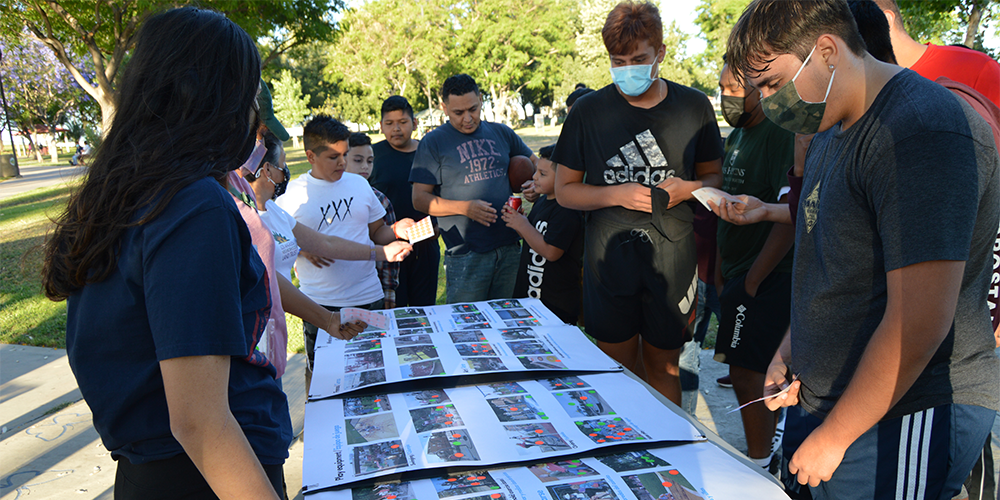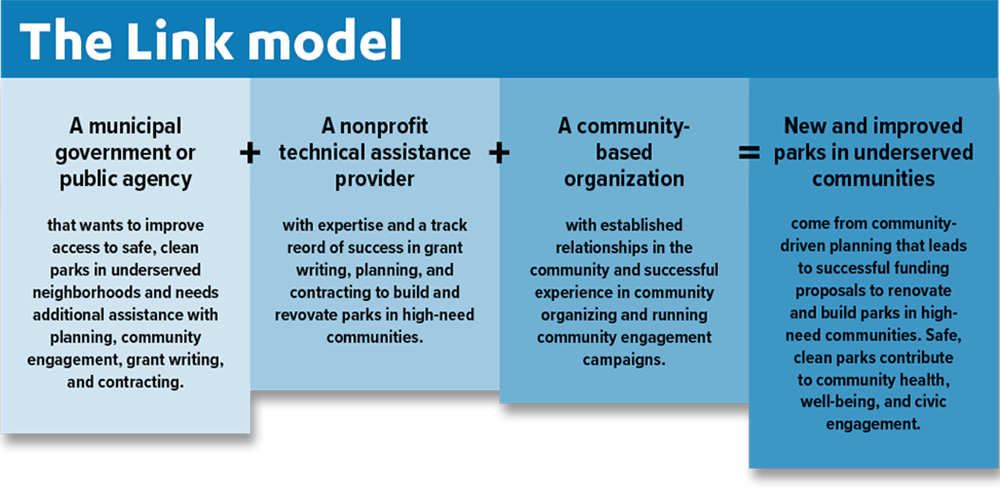UCLA research reveals successful model to build and renovate multibenefit parks in underserved communities
The Link initiative piloted in Los Angeles County demonstrates the value of a collaborative, community-driven parks building model
Community-driven planning centers the needs and priorities of residents to build and renovate park spaces. Image courtesy of Communities for a Better Environment.
By Mara Elana Burstein
More than half of Los Angeles County is “park poor, ” with 82% of these areas located in communities of color – according to the county’s park needs assessment.
To address this issue, the UCLA Luskin for Innovation (LCI) evaluated a promising initiative, called Link, which stands for Link Advocates, Governments, Families, and Parks.
Collaboration is fundamental to the Link approach. A new report summarizes findings from the study of how experienced nonprofit park building organizations and community-based organizations worked with under-resourced municipal governments and agencies to implement community-driven planning for parks and multibenefit green infrastructure projects in six disadvantaged communities in Los Angeles County.
Researchers found that the Link model results in projects – identified and supported by communities – successfully getting funded and built in the communities that most need them. Other findings include that the Link model builds capacity in under-invested communities, navigates bureaucracy, ensures community members have a voice in decision-making, and leverages funding opportunities (such as voter approved Measure A).
“The Link model is a great success,” said Jon Christensten, an LCI affiliated scholar and author of the report. “The priority now is to increase its scale with consistent public support to regularly and creatively fund park acquisitions, renovations, and maintenance in underserved neighborhoods.”
LCI’s report includes a roadmap to develop parks, and also offers lessons learned, metrics for success, and eight policy recommendations to better support the model. Guidance includes specific advice on how to minimize bureaucratic barriers and scale the model to more high- and very-high need communities throughout the county.
Quality parks and green spaces are integral to healthy, equitable, and environmentally sustainable communities. To ensure equitable access and benefits in lower-income communities, reliable funding is needed.
This research was made possible with the generous support of First 5 LA, The Rosalinde and Arthur Gilbert Foundation, the California Wellness Foundation, and Resources Legacy Fund.
To learn more about the findings, access the report here. For more research on developing equitable parks and green space, visit our Urban Greening webpage.









